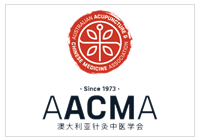The Dose is the Secret That is Never Taught
How Clinical Practice Teaches Us Things Our Teachers Couldn’t
Course Overview
In this TCM Talk, we examine the case that modern standard Chinese herbal medicine practice often uses a narrower dose range than is appropriate. Appropriateness, yi (宜) appears in the historical literature as a key virtue of a good physician and is an issue that applies to all aspects of practice, including acupuncture. Referencing the historical fangji literature as well as his clinical experience of prescribing Chinese herbs for westerners over the past 35 years Charles concludes that some patients respond to doses that might be considered ineffectual in modern China, whilst others require doses in excess of the standard bencao recommendations.
The wide range of doses seen in the historical literature is explained as being a consequence of differences in the conceptualisation of causality between the ancient and modern worlds. In modern times we tend to think in terms of pharmaceutical dose-response curves, in ancient China the relationship between medicinal interventions and patient physiology was understood in terms of resonance between substances possessing related qualities. The more similar things are the more strongly they influence each other, an idea that might seem at first to be esoteric but has some credence in rationality.
To illustrate the narrative, we will look at a few case histories, reference some historical literature, and examine some pharmacology that hints at standard dose-response curve anomalies. To conclude, Charles offers some ideas on how we might begin to address the challenges of this “secret that is never taught” question in our secret that is never taught question in our clinical work.

This course has been recorded at the AACMA Congress and is part of an ongoing collaboration to bring you the best teaching in the world of TCM. We thank the AACMA and Charlie Buck for sharing this important lecture.
Course Reviews:
blew my mind!
Really great to hear Charlie’s experience on the importance of dose, how in some cases lower and others higher is better, as well as giving useful examples and an outline of when and why these might be appropriate.
The graph on dosage and effect blew my mind!
Loved it!
Loved it! Grounded in clinical examples and relevant to practice.
Submit Review:
You must be logged in to submit a review.
Course Content
About the Teacher










